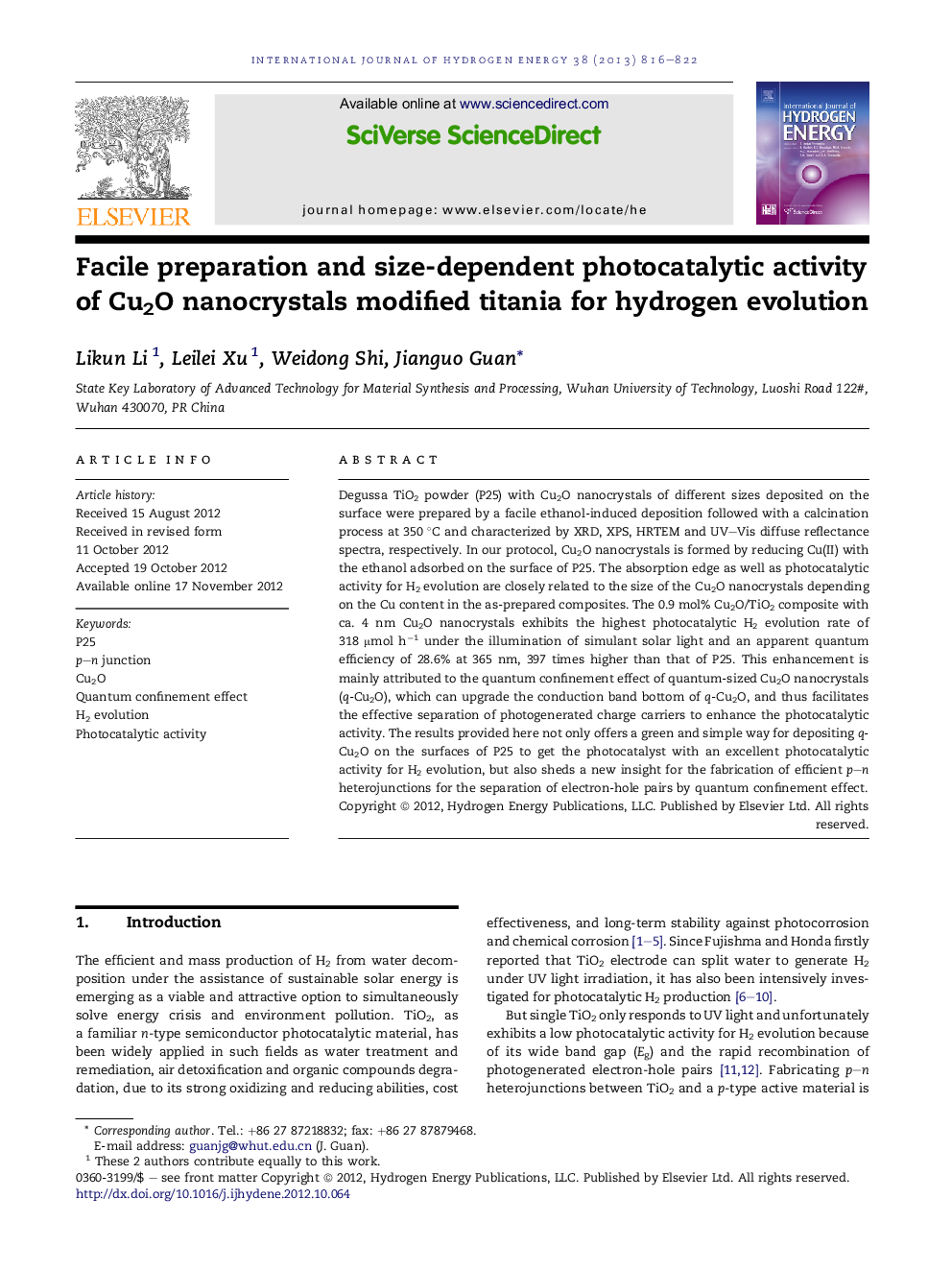| Article ID | Journal | Published Year | Pages | File Type |
|---|---|---|---|---|
| 1282047 | International Journal of Hydrogen Energy | 2013 | 7 Pages |
Degussa TiO2 powder (P25) with Cu2O nanocrystals of different sizes deposited on the surface were prepared by a facile ethanol-induced deposition followed with a calcination process at 350 °C and characterized by XRD, XPS, HRTEM and UV–Vis diffuse reflectance spectra, respectively. In our protocol, Cu2O nanocrystals is formed by reducing Cu(II) with the ethanol adsorbed on the surface of P25. The absorption edge as well as photocatalytic activity for H2 evolution are closely related to the size of the Cu2O nanocrystals depending on the Cu content in the as-prepared composites. The 0.9 mol% Cu2O/TiO2 composite with ca. 4 nm Cu2O nanocrystals exhibits the highest photocatalytic H2 evolution rate of 318 μmol h−1 under the illumination of simulant solar light and an apparent quantum efficiency of 28.6% at 365 nm, 397 times higher than that of P25. This enhancement is mainly attributed to the quantum confinement effect of quantum-sized Cu2O nanocrystals (q-Cu2O), which can upgrade the conduction band bottom of q-Cu2O, and thus facilitates the effective separation of photogenerated charge carriers to enhance the photocatalytic activity. The results provided here not only offers a green and simple way for depositing q-Cu2O on the surfaces of P25 to get the photocatalyst with an excellent photocatalytic activity for H2 evolution, but also sheds a new insight for the fabrication of efficient p–n heterojunctions for the separation of electron-hole pairs by quantum confinement effect.
► TiO2 with Cu2O nanocrystals of different sizes were prepared by a facile way. ► The size of the Cu2O nanocrystals depends on the deposited Cu content. ► The photocatalytic activity is closely related to the size of Cu2O nanocrystals. ► Efficient p–n heterojunctions were fabricated by quantum confinement effect. ► Enhanced activities derived from an efficient separation of photoexcited charges.
